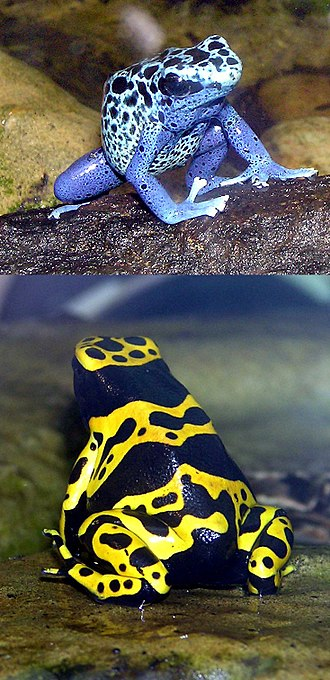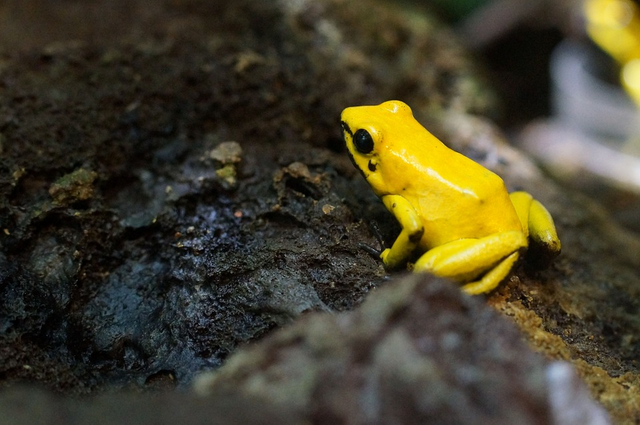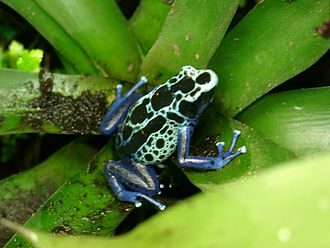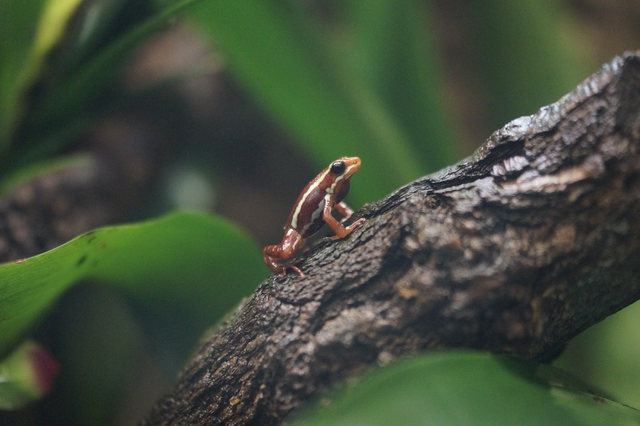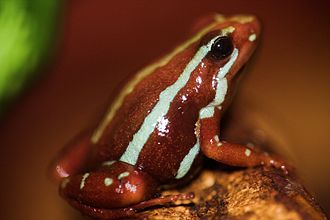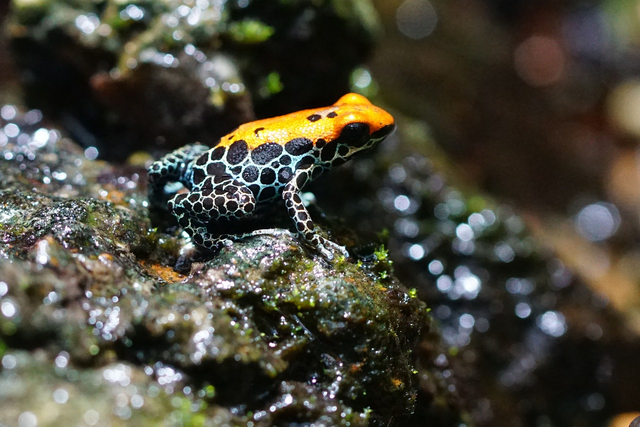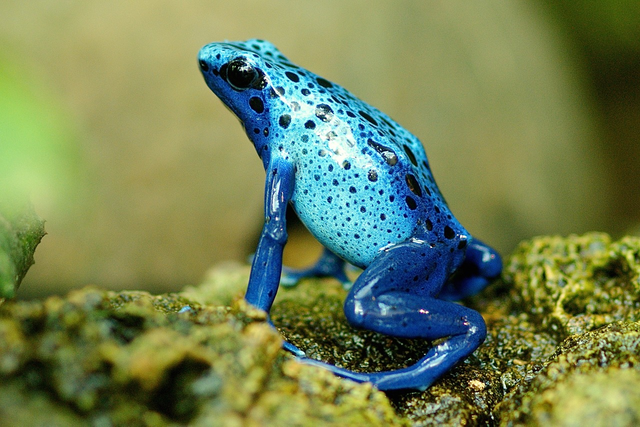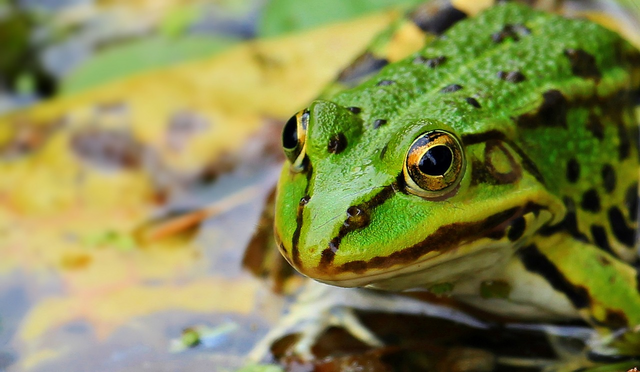How The Benefits Of Dart Frogs Are Poisonous To Humans
In the wild, frogs often fall prey to larger predator animals such as storks & snakes. To defend itself from predators, a number of frog species also produce deadly poisons for animals that eat them.
Poison dart frog (also known as dart-poison frog, poison frog or formerly known as poison arrow frog) is the common name of a group of frogs in the family Dendrobatidae which are native to tropical Central and South America. Poison dart frog Wikipedia source
The poison-producing frog is referred to in this article, poison and frog from Central & South America, especially the Amazon Forest. There are more than 170 species of poison dart frogs & are all included in the Dendrobatidae family.
Poison dart frogs are an example of an aposematic organism. Their bright colouration advertises unpalatability to potential predators. Aposematism is currently thought to have originated at least four times within the poison dart family according to phylogenetic trees, and dendrobatid frogs have since undergone dramatic divergences – both interspecific and intraspecific – in their aposematic colouration. This is surprising given the frequency-dependent nature of this type of defence mechanism. Poison dart frog Wikipedia source
These amphibians are often called "dart frogs" due to the Amerindians' indigenous use of their toxic secretions to poison the tips of blowdarts. However, of over 170 species, only four have been documented as being used for this purpose (curare plants are more commonly used), all of which come from the genus Phyllobates, which is characterized by the relatively large size and high levels of toxicity of its members. Poison dart frog Wikipedia source
The name "poison arrow" itself is given to this frog because the native Amazon often uses poison from the frog in question to smear the needle of their inflatable weapon projectile.
All species of poison dart frogs have colourful skin with motifs & colour combinations that vary between species. The poison dart frog has a maximum body length that is not up to 6 cm.
Many poison dart frogs secrete lipophilic alkaloid toxins such as allopumiliotoxin 267A, batrachotoxin, epibatidine, histrionicotoxin, and pumiliotoxin 251D through their skin. Alkaloids in the skin glands of poison frogs serve as a chemical defense against predation, and they are therefore able to be active alongside potential predators during the day. About 28 structural classes of alkaloids are known in poison frogs.The most toxic of poison dart frog species is Phyllobates terribilis. It is argued that dart frogs do not synthesize their poisons, but sequester the chemicals from arthropod prey items, such as ants, centipedes and mites – the diet-toxicity hypothesis. Because of this, captive-bred animals do not possess significant levels of toxins as they are reared on diets that do not contain the alkaloids sequestered by wild populations. Toxicity and medicine Wikipedia source
Even if it's small, don't underestimate this frog because poison dart frogs are one of the most poisonous animals in the world.
The most deadly species of poison dart frog is the golden poison frog, Phyllobates Terribilis, where the poison is enough to kill 10 adult humans!
Scientists have long speculated on the origin of their toxins, but now, a new study published in the current issue of The Proceedings of the National Academy of Sciences reports that poison dart frogs, as well as the Mantella poison frogs of Madagascar, derive their toxicity from the ants they eat. Specifically, both groups are frogs are capable of storing ants’ toxic alkaloid molecules in their glands without being harmed. Ants either synthesize these alkaloids themselves or acquire them from the plants on which they feed. Study discovers why poison dart frogs are Toxis source
Toxins from poison dart frogs are produced by a kind of special gland located under the skin. The gland itself can get the chemicals it needs to produce toxins because it gets alkaloid chemical compounds from insect animals eaten by arrow frogs.
That is why poison dart frogs that are kept in catches & not fed by insects from their wild habitats will have far less toxin content.
Although poisonous, humans actually don't need to put excessive fear on poison dart frogs because this frog poison is only active when swallowed or into the bloodstream.
The poison dart frog itself is not an animal that has no enemies at all in the wild because the snake species Leimadophis Epinephelus is known to have special immunity to poison dart frogs.
So far, the Epinephelus snake is the only natural enemy of poison dart frogs that have been identified by humans.
The uniqueness of poison dart frogs is not only limited to the colour & poison. Several species of poison dart frogs have a unique breed pattern.
After a marriage that generally takes place in the rainy season, female dart frogs will put their eggs in small basins containing water (for example in plants whose leaves are funnel-shaped) or on the surface of plants that have been given a kind of thick slime.
After a few days, the eggs will hatch into tadpoles. Male or female mother and then move the tadpoles to his back.
So that the tadpoles that are transported do not fall, the mother of the arrow frog produces a kind of sticky mucus that will only dissolve if exposed to water. The main purpose of the dart frog transporting the tadpoles was to move them to wider freshwater waters & more abundant food.
If the mother of the dart frog has arrived in the intended waters, he will put the tadpoles that he carried in the water & leave them. Especially for Oophaga Histrionica species, the female frog's parent will return to the waters regularly to feed the tadpoles of its offspring with unfertilized eggs.
Tadpoles will then undergo metamorphosis to become adult frogs. A poison dart frog is thought to live up to the age of 15.
The benefits of dart frogs are poisonous to humans not just to smear traditional Amazonian weapons. Later, scientists are examining the poisonous content of arrow frogs because they hope to use chemical components in their toxins to be processed into drugs.
For example painkillers. The poison dart frog also became one of the exotic pets that began to be in great demand thanks to its beautiful colour patterns.
Reference:
Poison dart frog Wikipedia source
Toxicity and medicine Wikipedia source
Study discovers why poison dart frogs are Toxis source
